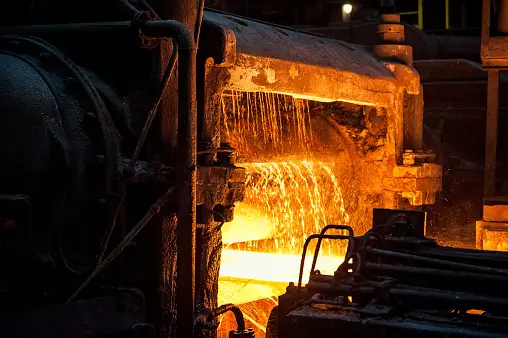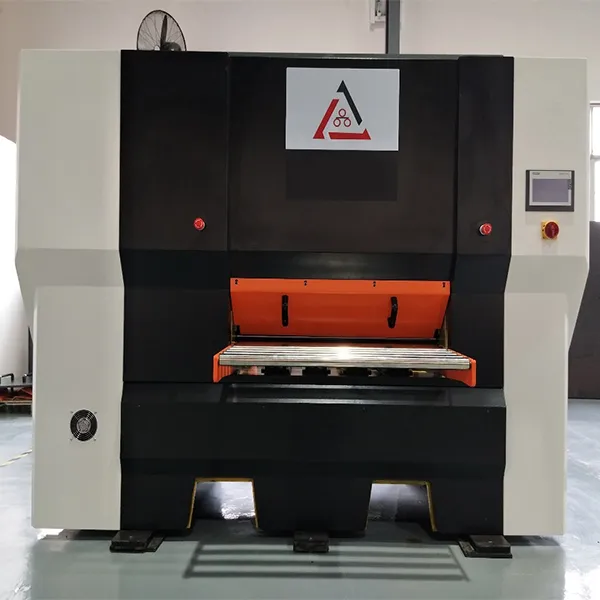
Comparing Manual Leveling Machine and Hydraulic Leveling Machine Options
In metal fabrication and processing operations, selecting the right leveling equipment is crucial for achieving optimal flatness and surface quality. The choice between manual and hydraulic leveling machines represents a fundamental decision point that impacts production efficiency, operational costs, and final product quality. This comprehensive comparison examines both technologies to help manufacturers make informed decisions based on their specific requirements.
Fundamental Technology Overview
Manual Leveling Machines
Manual leveling equipment represents the traditional approach to material flattening, relying on operator expertise and mechanical adjustment systems:
-
Mechanical screw adjustment mechanisms for roll positioning
-
Hand-wheel operated pressure control systems
-
Visual inspection-based quality assessment
-
Mechanical leverage principles for force application
-
Basic spring-loaded or weighted counterbalance systems
Hydraulic Leveling Machines
Hydraulic systems utilize fluid power to deliver precise, powerful leveling capabilities:
-
Hydraulic cylinder-based pressure application
-
Pump-driven hydraulic power units
-
Precision pressure gauges and control valves
-
Integrated relief and safety valve systems
-
Potential for automation and PLC integration
Performance Comparison
Precision and Consistency
Manual machines demonstrate significant limitations in consistency:
-
Operator-dependent results varying between shifts
-
Inconsistent pressure application across material width
-
Gradual performance drift due to mechanical wear
-
Limited repeatability for identical material settings
-
Visual assessment limitations for subtle imperfections
Hydraulic systems offer superior precision:
-
Consistent, repeatable pressure application
-
Uniform force distribution across entire roll width
-
Maintained calibration and performance stability
-
Digital pressure setting memory capabilities
-
Automated compensation for material variations
Production Capacity and Throughput
Manual machines suit limited production scenarios:
-
Typical operating speeds: 3-8 meters per minute
-
Significant operator fatigue during extended runs
-
Frequent adjustments required for material changes
-
Limited suitability for continuous operation
-
Maximum practical thickness limitations
Hydraulic machines enable industrial production rates:
-
Operating speeds of 15-30+ meters per minute
-
Continuous operation capability for high-volume production
-
Quick changeover between material specifications
-
Reduced operator intervention requirements
-
Capability for integration into automated lines
Operational Considerations
Skill Requirements and Training
Manual machine operation demands experienced operators:
-
Extensive tactile feedback interpretation
-
Developed visual assessment skills
-
Understanding of material behavior and springback
-
Mechanical adjustment proficiency
-
Troubleshooting experience for mechanical issues
Hydraulic systems feature more accessible operation:
-
Simplified control interface operation
-
Reduced dependence on operator "feel"
-
Pre-set parameter utilization
-
Basic maintenance skill requirements
-
Lower training investment for competent operation
Maintenance and Reliability
Manual systems maintenance involves:
-
Regular mechanical component lubrication
-
Screw thread and gear mechanism inspection
-
Wear surface monitoring and replacement
-
Basic mechanical alignment verification
-
Generally straightforward repair procedures
Hydraulic systems require specialized maintenance:
-
Hydraulic fluid quality monitoring and replacement
-
Pump and valve system performance verification
-
Seal integrity maintenance and replacement
-
Filter element change schedules
-
Professional service requirements for major repairs
Cost Analysis
Initial Investment
Manual leveling machines present lower entry costs:
-
Basic machine purchase price approximately 40-60% of hydraulic equivalents
-
Minimal installation and commissioning requirements
-
Basic utility requirements without specialized power needs
-
Limited foundation and support structure costs
Hydraulic systems require greater initial investment:
-
Higher machine purchase price reflecting advanced technology
-
Professional installation and calibration services
-
Potential hydraulic power unit infrastructure requirements
-
Comprehensive safety system installation
Operational Economics
Manual machines incur higher ongoing costs:
-
Significant labor requirements per production unit
-
Higher scrap rates due to inconsistency
-
Limited production throughput constraining revenue
-
Frequent adjustment and calibration time
-
Higher skill premium for experienced operators
Hydraulic systems deliver operational efficiencies:
-
Reduced labor costs through automation
-
Lower scrap rates through consistent performance
-
Higher throughput capacity increasing production revenue
-
Reduced setup and changeover time
-
Better energy efficiency in high-volume production
Application Scenarios
Ideal Manual Machine Applications
-
Prototype and job shop environments
-
Low-volume production runs
-
Educational and training facilities
-
Maintenance and repair operations
-
Budget-constrained situations with skilled labor available
Optimal Hydraulic Machine Applications
-
High-volume manufacturing operations
-
Automated production line integration
-
Precision-sensitive applications
-
Mixed-material production environments
-
Quality-critical components manufacturing
The XINLIJIN Perspective
At XINLIJIN, we recognize that both technologies have their place in modern manufacturing. Our approach involves:
Right-Technology Selection Guidance
-
Comprehensive application analysis
-
Production volume and growth projection assessment
-
Staff capability and training resource evaluation
-
Total cost of ownership calculations
-
Future expansion and upgrade path planning
Performance-Optimized Equipment Design
Manual machines featuring:
-
Enhanced mechanical precision elements
-
Improved ergonomic adjustment systems
-
Durability-focused component selection
-
Basic measurement and guidance systems
Hydraulic systems incorporating:
-
Advanced control system integration
-
Energy-efficient hydraulic circuit design
-
Precision pressure control technology
-
Comprehensive safety and monitoring systems
Conclusion: Making the Strategic Choice
The decision between manual and hydraulic leveling technology represents a balance between immediate constraints and long-term objectives. Manual systems offer accessibility and lower initial investment for appropriate applications, while hydraulic systems deliver the performance, consistency, and efficiency required for competitive manufacturing operations.
Manufacturers should consider not only current requirements but also anticipated growth, quality demands, and operational cost structures. With XINLIJIN's expertise in both technologies, we can provide the optimal leveling solution that matches your specific production needs and business objectives, ensuring your investment delivers maximum value throughout its operational lifecycle.


















































